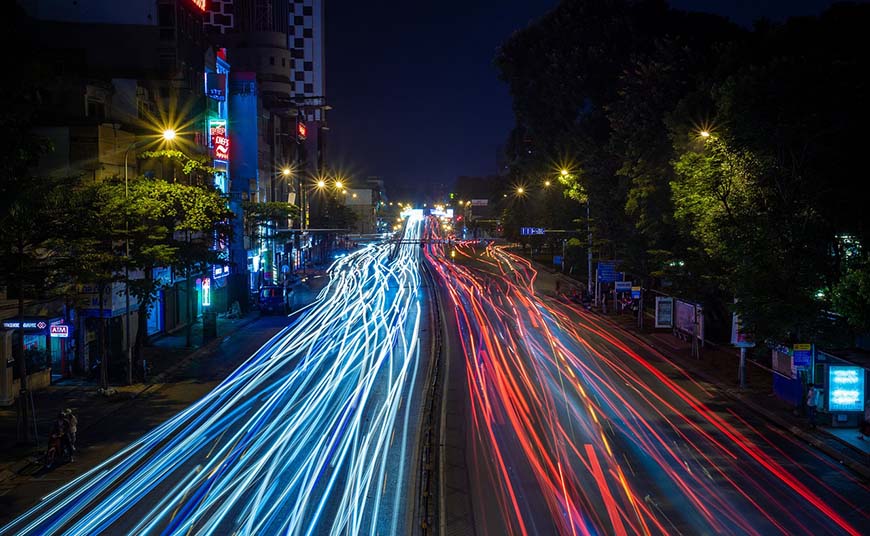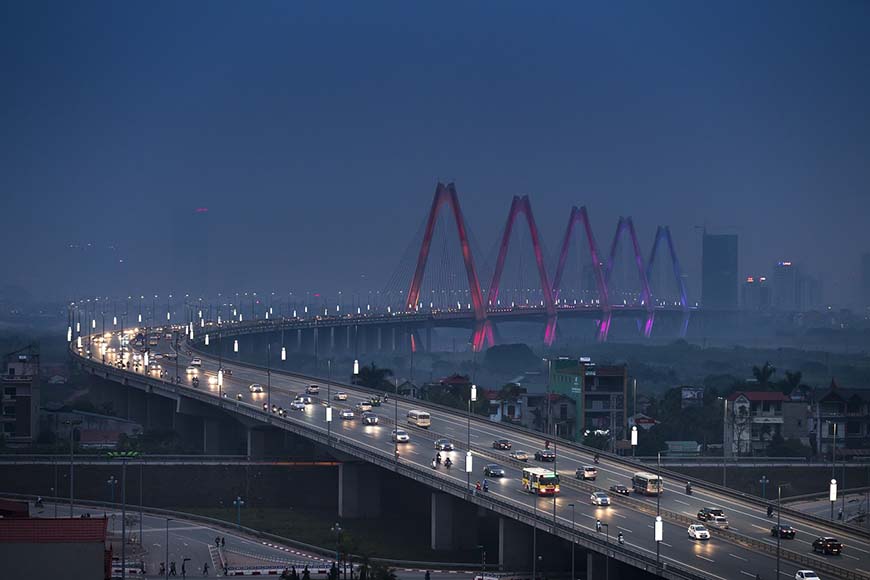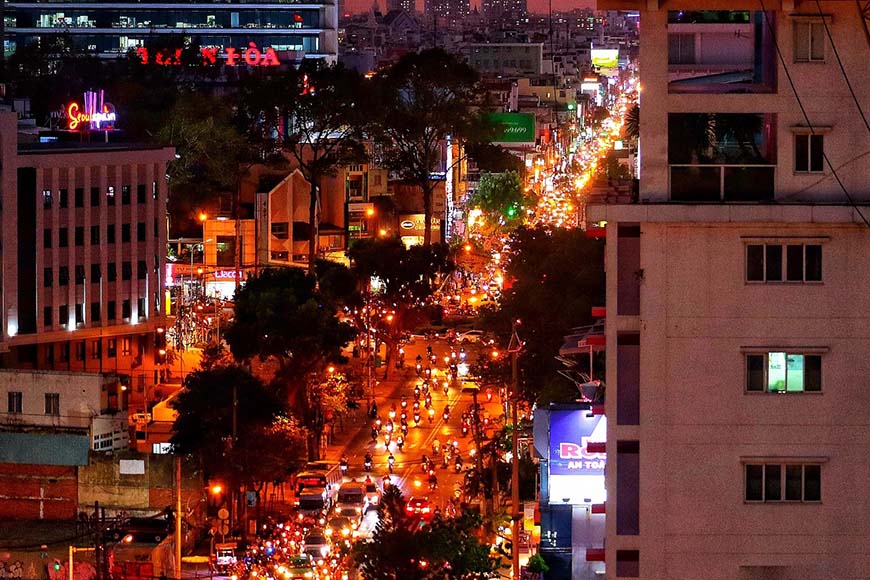Vietnam is a country of breathtaking scenery, ancient history and fascinating culture, making it an extraordinary place to explore. Adding an authentic driving experience to your trip can be tempting. However, before you take the wheel or the handlebars, it's crucial to familiarize yourself with Vietnamese traffic regulations, which are often different from those in Western countries.
This article aims to provide a practical guide to navigating Vietnamese roads safely, to ensure a peaceful and enjoyable journey.

Navigating Vietnamese roads safely - Photo Credit : Pixabay
General information
Vietnam is a long, narrow, S-shaped country in the eastern part of the Indochinese peninsula. It borders China to the north, Laos and Cambodia to the west, southern China to the east, the Gulf of Tonkin to the east and the Gulf of Thailand to the south.
Here are a few key points about Vietnam's geography:
✓ Coastline: Vietnam has 1,600 kilometers of coastline on the eastern side of the country.
✓ Mountains: The Annam Cordillera rises on most of Vietnam's western side.
✓ Rivers: Vietnam's largest rivers are the Mekong and the Red, which provide fertile land for rice and other crops.
✓ Vietnam is home to eight UNESCO World Heritage sites, including pagodas, temples and ancient cities. To fully experience this land of opportunity, it's essential to be able to drive to all the places you want to visit. Opting to drive in Vietnam with an International Driving Permit is the ideal choice if you want to explore areas that are not easily accessible by other means of transport, such as buses or trains.
Having a valid international driving license in Vietnam gives you the freedom to rent a car or motorcycle and discover the wonders of this country.
Good to know
In Vietnam, it is compulsory for all drivers of motor vehicles and motorcyclists using motorcycles of 50 cm3 or more to have a driving license. As a foreign visitor, you can only drive if you have a temporary Vietnamese driving license, accompanied by your International Driving Permit (IDP). Here are the permits you need to drive in Vietnam: - AM permit for two-wheelers
- ♦ AM license for 2- or 3-wheeled vehicles with a cylinder capacity of 50 cm3 ;
- ♦ A1 license for light motorcycles up to 175 cm3 ;
- ♦ A2 license for category A1 bicycles and motorcycles up to 175 cm3 ;
- ♦ B (1) driving license for cars.

Ha Noi - Nhat Tan Bridge - Photo Credit : Pixabay
International Driving Permit
Before driving in Vietnam, make sure you have an International Driving Permit. This will enable you to rent a car (although it's quite expensive) or a motorcycle, and explore the wonders of the country.
An International Driving Permit is an official document that validates your driving license internationally. It's a valuable, legal document that identifies you as a legally authorized driver. In other words, having an International Driving Permit means you can drive a motorcycle in Vietnam or rent a car. The first question to ask is "how do I get a driving license in Vietnam?".
Getting a driving license in Vietnam
Two possible options:
1. International Driving Permit (IDP)
- ♦ Valid for stays of less than 3 months.
- ♦ Must be accompanied by your national license.
- ♦ You can obtain it from your prefecture in France.
- ♦ Time required: about 2 weeks.
- ♦ Cost: approx. €30.
2. Vietnamese driving license
Mandatory for stays over 3 months.
Two types of license:
- ♦ Motorcycle license: for engines under 175 cm³.
- ♦ Car license: for vehicles classified as type B (passenger cars).
Steps to follow :
- ♦ Fill in an application form (contact the Office of Traffic and Public Works in Hanoi, or the Office of Transport in Ho Chi Minh City).
- ♦ Provide your passport, visa and national driving license.
- ♦ Pass a theory and practical test.
- ♦ Make the necessary payment for processing fees.
- ♦ It takes about two weeks to process the application.
- ♦ Cost: approximately 600,000 Vietnamese dong (about €25).
Advice :
- ♦ Start the administrative process as soon as possible, as it can take a long time.
- ♦ If you don't speak Vietnamese, take a translator with you.

Traffic in Saigon city - Photo Credit : Pixabay
Driving rules in Vietnam
1. Traffic directions and priorities
✓ Driving on the right: Vietnam follows the practice of driving on the right-hand side of the road. You must respect this rule and exercise caution at intersections and traffic circles.
✓ Right of way: Pedestrians crossing at marked crosswalks have priority (although this concept remains mostly theoretical in practice). You must also obey traffic signs and give way to vehicles coming from your right on non-priority roads.
2. Speed limits
✓ Urban areas: Speed is generally limited to 30-50 km/h in towns and cities. Exercise caution and adjust your speed according to traffic density and weather conditions.
✓ Outside built-up areas: Speed limits vary from road to road, and can reach 90 km/h on freeways. Strictly observe speed limits to avoid fines and ensure your safety.
3. Helmets and equipment
✓ Seat belts: Seat belts must be worn by drivers and front-seat passengers.
✓ Helmet: Helmets must be worn by all drivers and passengers of two-wheeled vehicles. Ideally, your helmet should be approved and securely fastened...
4. Alcohol and driving
Vietnam has a strict policy on drink-driving: it is illegal to drive a vehicle under the influence of alcohol. The permitted blood alcohol level is 0 g/l. It is crucial never to drive after consuming alcohol. Fines for drink-driving range from 258 to 1,723 euros, and your driving license can be suspended for up to two years. In the most serious cases, you risk severe penalties, including vehicle confiscation and imprisonment.
5. Specific rules and advice
✓ Traffic lights: Observe red lights and look out for flashing orange lights, which indicate imminent danger. Remember that motorcycles are allowed to turn right at red lights.
✓ Cell phones: It's forbidden to use a cell phone while driving. Use a hands-free kit or pull over if you need to take a call. If you are caught breaking this rule, expect a fine ranging from 600,000 to 800,000 VND (24 to 30 euros). Using headphones while driving? You'll have to pay 1 to 2 million VND (around 40 to 80 euros), and your driving license will be suspended in Vietnam for 1 to 3 months.
Police checks: Be polite and cooperative during police checks. Have your driving documents and passport ready.

Vietnam, the Land of Motorbikes! - Photo Credit : Pixabay
Driving etiquette in Vietnam
Tacit overtaking law
If you have to overtake another vehicleit is customary to first honk the horn or give a light signal before overtaking...
Right of way
In most Asian countries, a basic rule of survival on the road is that the larger the vehicle, the more right of way it has. Right of way is determined by vehicle size. Who is king of the road and who has priority? The hierarchy of vehicle dominance breaks down as follows: trucks, buses, vans, cars, motorcycles, scooters, bicycles and finally pedestrians. However, don't assume that having a larger vehicle will necessarily grant you more favors (a priori, the volume of decibels that the horn is able to spit out also matters...).
The other rule of thumb is: "Where the scotter goes, the highway code goes".
On the driving side
In Vietnam, honking is the standard way of communicating with other drivers, who must use it correctly to convey the right message to others. On blind bends, the horn is used to alert others. A quick honk is a polite signal that you're about to attempt to overtake, or that you're approaching from behind, or that you're close to another car. Three loud blasts are an emergency signal, a way of telling people not to move. However, be prepared to be surprised by the disrespect or excessive personalization of these unwritten rules....
Heavy traffic: traffic is often congested, especially in big cities. Exercise caution and patience.
Two-wheelers: Motorbikes and scooters are everywhere. Stay alert and overtake with caution.
Road conditions: Road quality may not be at its best (especially in the mountains), so take care on secondary roads.
Stray animals: Animals with suicidal tendencies can cross the road, so be vigilant.
In conclusion
It's crucial to learn and respect Vietnamese traffic rules in order to travel safely and get the most out of your experience. Don't hesitate to ask the local authorities or your travel agency for further information. Caution and foresight will be your best allies on Vietnamese roads!